-
Chuck

- Premium Member - 2024

- Posts: 903
- Joined: Mon May 23, 2022 2:30 pm
Re: Agrias butterflies
by Chuck » Fri Apr 12, 2024 12:55 pm
John Shuey's initial post on the topic is loaded with gold, and I'd advise any potential traveler to parse every sentence.
Global travel has never been easier. There are airfields virtually everywhere, thanks to WW2; the only country I can think of that doesn't have air service is Tokelau. You can book lodging almost anywhere directly; you can use satellite imagery to examine the immediate area. You can book a beat up rental vehicle in PNG from Joliet.
When and where to target particular taxa is at your fingertips; no more digging through piles of paper publications, no more letter writing just send email.
Note though, and to answer the OP question, targeting a specific taxon that's generally rare will be done at the cost of ignoring virtually everything else...and that everything else is where the real joy is; it's in finding species that are not commercially viable yet eye opening. As John said, don't go with a list- just go.
Now, I'm having trouble thinking of ANYTHING that's not more easily learned than when done with someone who's done it. The success rate of collecting in a foreign country is highly influenced by having a guide, be it a fellow collector and/or a local guide. This is not to say just showing up alone won't be wonderful- I've done it many times. But then I adapt to cultures quickly and make friends readily, so it's only days until I've hooked up with everyone I need.
I bring what I need- my favorite clothing, nets, envelopes, etc. When I leave, the nets, extra envelopes, ID guides, boots stay behind with young, aspiring commercial collectors. And guess who I call first when I get back in country, or an associate is going to visit that country.
On danger: there are two sources of danger with a common denominator: YOU.
Yes, there are places to avoid. In USA, the red/blue voting map is a good start- stay out of red areas. The good thing is that there aren't many insects of interest in the red areas. These areas are largely urban areas, and the same rule applies elsewhere- avoid. This is, of course, dependent on the area. And I think John already stated: stay out of bars, strip joints, social demonstrations; and nothing good ever happens after 10pm.
"The LIST" referred to is largely a joke. It's compiled by bureaucrats who've never even been to those countries. This list has elevated concerns for countries including Costa Rica, Germany, France, Belgium, etc. Go read the AUS warnings about USA, it's always good for entertainment. As for the "no go" countries like Afghanistan, if you don't know that you shouldn't go, what's there the say...
No, you don't want to run into a cocaine production facility in FARC territory in Colombia. Nor do you want to stumble across an illicit pot field in NY, a meth lab in rural KY, or a human coyote in southern AZ. That's where local guides can both avoid and extract from situations.
But so far as criminals go, the key denominator is YOU. Criminals evaluate risk vs reward, they aren't stupid. So don't increase their reward. Some tourists are an easy mark- gullible, scared, and influenced with the simplest suggestion. Being loud, flashy, and rich increases the reward. But so too does being arrogant, loud, and rude- that increases the SOCIAL reward for punishing cultural violations.
The non-human danger is environmental. Those who are outdoor oriented are at an advantage, even if the jungle is foreign to them. There are dangers- snakes, cliffs, things in the sea, storms. For those who are pansies, they're in for a world of hurt- better to take a cruise ship. Every day NYSDEC publishes a list of rescues in the Adirondack mountains, and my buddies and I laugh our butts off- every one is the same "from NYC area with inadequate clothing." Wait...these are the same mountains we hike, year-round. So really, it's not the environment, it's the individual...some people should just stay inside. But for those who have a bit of outdoor experience, and some common sense, the real dangers of the environment will be recognized and avoided.
One thing that really hasn't been brought up is patience. Developing countries are not on a schedule. If they get around to your permit today, or next Tuesday, is immaterial to them. If you're in a hurry, and start demanding, you'll have problems. If your ride shows up three hours late, well there's tomorrow- unless you're on a schedule. Expect delays, expect a two hour project to take five days. Be patient, and don't get upset. If you plan to jet to Panama for five days and think you'll achieve much, you'll be sorely disappointed. Further to that, most developing country people work on RELATIONSHIPS, and that takes time to develop.
Tropical collecting isn't about bringing home a dollar amount. From the worst perspective, if you're 25 and skip the trip and invest that $5000 for 40 years, it will be worth $51,500. Screw that. Save money elsewhere- don't buy Starbucks every day. An overseas collecting trip IS an investment- not in bugs, in YOU. "The Ugly American Tourist" - don't be that person. Get out, and see the world, experience other cultures, eat other foods, see different environments. SURE you may be scared, and you probably will get frustrated by the lack of speed/progress- this is building relationships and character. It's building a better you. If, like most Americans (and Canadians and Europeans) if you're afraid of spiders and guns and sharks, maybe you won't be when you're done. You'll learn to appreciate the miracle of the flush toilet. You'll learn that indeed you can get by without electricity. And likely you'll sneer at the tourist that complains about having to sit in the airplane center seat for 90 minutes, because you'll know that inconvenience is trivial.
You want to watch TV the rest of your life, stay home. Mow your little lawn, buy your bugs online. Or get out, and build a better you.
-
eurytides

- Posts: 199
- Joined: Tue May 24, 2022 1:36 am
Re: First butterfly of 2024
by eurytides » Fri Apr 12, 2024 12:30 am
-
Paul K

- Posts: 183
- Joined: Mon May 23, 2022 6:44 pm
Re: Agrias butterflies
by Paul K » Thu Apr 11, 2024 2:08 pm
You’ll feel comfortable, safe and have shelter just in case you end up having no place to sleep. You will also be mobile to search for good collecting spots and you won’t be exposed to potential predators, local people are usually friendly but you don’t want to end up face to face with the bad guy in the forest. Keep your eyes open and stay alert.
-
Paul K

- Posts: 183
- Joined: Mon May 23, 2022 6:44 pm
Re: Agrias butterflies
by Paul K » Thu Apr 11, 2024 1:44 am
If you don’t go collecting in tropics you don’t live your life.
-
Paul K

- Posts: 183
- Joined: Mon May 23, 2022 6:44 pm
Re: First butterfly of 2024
by Paul K » Thu Apr 11, 2024 1:37 am
-
Jshuey

- Global Moderators

- Posts: 156
- Joined: Tue Mar 22, 2022 2:27 pm
Re: Agrias butterflies
by Jshuey » Thu Apr 11, 2024 1:35 am
Belize is easy as well - and English speaking! Again - AirBnbs in the bush would be the way to go. If you are just collecting, all you need is a kitchen, bathroom, beds and electricity - right? Hot shower - hit and miss! Eat local and you may spend 15 bucks a day (rice and beans, stew chicken, and beans and rice!). The odds of hitting Agrias are low, but you never know (two species, and I can point you to spots for both). It's all about planning ahead, getting your permit lined up ($100US), and then just getting there!
Puerto Rico - can be equally cheap. We are pondering a trip to the south coast beaches right now.
You just have to take the first step and do it! It will give you memories that last a lifetime!
John
-
livingplanet3
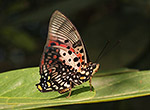
- Premium Member - 2024

- Posts: 592
- Joined: Tue May 24, 2022 4:55 pm
Re: First butterfly of 2024
by livingplanet3 » Wed Apr 10, 2024 11:55 pm
-
boghaunter1
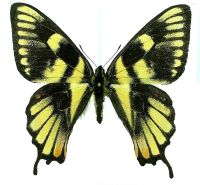
- Premium Member - 2024

- Posts: 272
- Joined: Mon May 23, 2022 7:16 pm
Re: First butterfly of 2024
by boghaunter1 » Wed Apr 10, 2024 10:02 pm
John K.
-
Jshuey

- Global Moderators

- Posts: 156
- Joined: Tue Mar 22, 2022 2:27 pm
Re: Agrias butterflies
by Jshuey » Wed Apr 10, 2024 4:48 pm
It’s been a while and welcome Back. And congratulations!!!!
First, I personally can’t imagine just building a collection made up of purchased specimens. Yep – I purchase bugs from places I can’t get to, but I treasure the bugs I’ve caught myself. If I had a couple of thousand bucks to spend on bugs, it’s not even close how the experience of being in the field compares to opening a dealer’s shipment. It’s life enrichening versus transactional.
And don’t be intimidated by inflated stories of danger. You can choose to be scared of life, or you can choose to embrace life. Big cities in Latin America can be dangerous in every country. And some places – like Venezuela – I’d be very cautious about. Just follow basic rules of safety – but most importantly, don’t act and look like a victim. Cheap watch, wallet always in your front pocket, conservative clothing, stay out of bars, and so on. Basically, be one with the country you are visiting. And speak basic local languages – enough to get by at minimum. (Google translate is great by the way – but not always available). Join a facebook expat community for a few countries, just to see what expats are chatting about. Interestingly, usually not about crime (even in Ecuador as of late). Or you can watch Fox news or Newsmax, and live your life in fear. If that describes you – then stay out of the tropics! You will see danger at every turn.
At a basic level, people in Latin America are very warm and friendly. Much more so that in the US. And I base this on almost 50 trips though rural Central America, the Caribbean and Brasil. You just need to be respectful of culture and traditions. As long as you don’t act like a wealthy, entitled, ignorant gringo, then you will be fine.
It certainly would be awesome to collect some myself but I'm honestly not sure all that would entail. A few questions someone here may be able to answer:
1. I'm sure there are certain South American countries more friendly to collecting (not Brazil, lol), what are the best options?
It’s more about permits than anything else nowadays. FG of course is great – but hard to get to from the US. And there are guides with solid reviews out there for Peru. But with 6 months advance planning, you can get permits to many countries – you just have to know how. (The Skeptical Moth web site is a great place to start). And no country is impossible – I pulled off a Brazil Permit a few years back, but it took a few years of advance prep to lay the ground-work.
If you want a easy entry to the tropics, try Puerto Rico – no permit or import paperwork required.
2. How does one go about finding a collecting spot in a foreign country and a local connection?
This is what the Lep groups are all about. Go to a Tropical Leps Soc meeting and meet some people. Same for the Lep Soc. There are people here in the US that have permits and are looking for “volunteers” in the field, especially if you are covering your own expenses.
As to finding easy spots to collect – If I'm headed someplace new, I use all the hotel and home rental sites to find accommodation, and then Google earth to see how they are situated relative to habitats. You can almost always find some reasonable tourist places next to forest. Hill-top homes with a “view” are great for light sheets. You just need to verify that the owners are ok with it (never had one say no to me yet).
3. What kind of import/export permits/paperwork would a collecting trip require. Do you ship your specimens back or carry them with you?
3-177 forms filled out and filed in advance – with a permit of course. I carry them personally, because either way, they are probably going to get inspected, and as long as you have the paperwork in hand, it remans in your control.
4. Is it better to travel with collecting equipment, or ship it there, or buy/make it there? I'm thinking of bait traps, lights and nets.
Carry it. If you ship, you will be charged duty – which I did once and was stunned. If you need to, it’s cheaper to check an extra bag. But I can get everything I need into a 60-inch roll-along that weighs under 50 pounds (plus a carry on back-pack). 60-inches because my telescoping net handle fits inside it. Take all “essential gear” with you. If you try and make it, you are losing valuable collecting time! There is never enough time for the field! I get panicky when I'm doing something stupid while surrounded by bugs flying everywhere. Every second counts!
FYI - I generally buy new “used” field clothing at a second-hand store for serious trips. Rinse the clothing out at the end of the trip and leave it behind. It may or may not get a third life in the local community. This frees up weight and space for the trip home. And remember, you can purchase almost any supply you need once you are in country.
5. How safe would it be to embark on such a trip as a single individual?
Been there – done it – still alive. Mexico, Brasil and Belize. Honestly, I always feel safer in these counties than I do in the rural SE US. But if you do your first trip solo, then I would scope of hotels that are surrounded by enough forest to satisfy your needs and stick close by.
I personally suggest finding someone to split costs with, so that you can rent a car, share a room, split guide costs, and feel safe together. Your first trip to the tropics is intense and new, and I’d want someone responsible along with me, just to take the adrenaline edge off! Remember, it’s not just people you need to be wary of. Snakes come to mind (Although that threat is also overstated by most people). It takes a while to get comfortable enough to go solo.
6. For something like Agrias, how likely is it that you would even collect any while there?
You can never go to the tropics with a “must collect” list. If you do, it will break your heart. But if you take 5-10 bait traps and use them well in the hopes of getting Agrias, you will for certain get owl butterflies, Prepona, Memphis, Archeoprepona, Morpho, Catenephele, and so much more. And that is why it is such a thrill. You honestly never know what you will see next. Assuming you are there in the rainy season, you should come home with 3-500 species after a week! (or more!)
John
-
MMCinBay

- Posts: 1
- Joined: Wed Apr 10, 2024 12:57 am
Which kind of roach nymph?
by MMCinBay » Wed Apr 10, 2024 1:21 am
- location San Francisco area California
- found two nymphs like this two nights in a row on bathroom floor of the single family detached home I moved into two months ago
- house has a very overgrown yard with a lot of rotting wood, mulch and vegetation, it rained excessively during February and March
- I found a very dark almost black cockroach on the ground outside when I initially moved in but don’t have an image as the area was disturbed by construction work since then
- Have been getting lots of packages in cardboard boxes piling up
-
Trehopr1
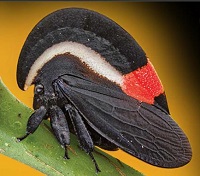
- Global Moderators

- Posts: 996
- Joined: Thu Mar 31, 2022 1:48 am
Re: Agrias butterflies
by Trehopr1 » Tue Apr 09, 2024 5:49 pm
You will be in a foreign country and faced with a foreign language and nuances you WON'T
understand ! You will be single, loaded down with baggage, gullible to smooth talkers, and hopelessly frustrated by problems which you will feel are out of your control.
French Guiana sounds like a place I'd like to visit myself. I have no doubt there are sources and outlets for safe travel and collecting there. But, just getting there is expensive as it will likely require two flights. Also, anything you do on the ground once you arrive WILL cost you because you are viewed as a tourist. You don't know what is normally charged for things so they can pretty much ask what they want and you're in a spot. Again, don't carry a lot of money on you and don't find yourself in situations where you are alone and vulnerable !
Travel, and indeed "views of adventure" are NOT to be taken lightly these days. Thoughts of trips to well-known drug producing countries like Colombia, Peru, and Bolivia should be high on the list of "no-go's" for all around safety sake, and security issues.
Above all, thoroughly research any trip/adventure ideas to see if taking a $4000 or $5,000 trip abroad will TRULY be worth what you are able to bring back.
You may arrive at a bad time of the season, target species may not be encountered or found, it could rain on you virtually the whole time, or some of the goods you bring back could acquire mold or get broken along the way.
These are all fair and reasonable things to consider....
Honestly, staying stateside and doing things here is a far better bet all around. European collectors don't have quite the same concerns that WE do. They have "umpteen" hosted insect fairs where they simply stop in and buy practically anything they are looking for without the need to travel --- except maybe to the neighboring country.
Also, we (as a country) are not necessarily looked upon favorably by some countries where our politics or cross border interdictions to lawlessness impact the "bad guys" or those influenced by them. This is why there is A LIST of travel warnings put out by the US government to safeguard any aspiring interests in questionable countries.
-
wollastoni

- Site Admin

- Posts: 460
- Joined: Fri Mar 18, 2022 9:51 am
Re: Agrias butterflies
by wollastoni » Tue Apr 09, 2024 8:34 am
A lot of countries are said to be VERY dangerous and once there, if you have the good guides, it is not so dangerous. Having the good guides is key.
I have spent time in Chicago, Paris, London... and I am sure it was easier to lose my life there that in New Guinea or South America.
I have the feeling our generation have "lost" the quest of adventures. People are afraid of everything now.
Some countries are nearly impossible to collect in (Brazil). Some are easy (French Guiana). Some are more difficult but with a good guide you can go (Colombia, Peru, ...).
Tim, my answers to your question.
1/ French Guiana is the easiest. Then Peru & Colombia.
2/ You have to ask people who have been there. On Insectnet, in your national entomological association, in insect fairs...
3/ Each country have a specific regulation
4/ I bring all material for butterflies (nets, killing jars, traps). For moths, people rent equipement on place.
5/ It is always better to find a collecting buddy. On Insectnet, in your national entomological association, in insect fairs...
6 / Agrias are not so hard to bait trap. You will get some.
And I agree with Chuck, these travels in tropical areas will mark your life for ever.
-
lamprima2
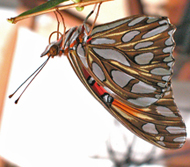
- Premium Member - 2024

- Posts: 92
- Joined: Mon May 23, 2022 8:16 pm
Re: Preserving large Lepidoptera pupae
by lamprima2 » Mon Apr 08, 2024 10:28 pm
plenty of Jalapeno. I'll try again, and let you guys know.
-
Trehopr1

- Global Moderators

- Posts: 996
- Joined: Thu Mar 31, 2022 1:48 am
Re: Preserving large Lepidoptera pupae
by Trehopr1 » Mon Apr 08, 2024 9:43 pm
The older cuticle of the pupal case should be thick enough and strong enough to be just fine and in time the insides will dry out and harden.
Then you can have your pinned.specimen.
-
lamprima2

- Premium Member - 2024

- Posts: 92
- Joined: Mon May 23, 2022 8:16 pm
Re: Preserving large Lepidoptera pupae
by lamprima2 » Mon Apr 08, 2024 8:32 pm
Thank you for your replies.
I did exchange the alcohol solution a few times until it became clear.
There is no problem storing any specimens in alcohol,
however, my goal was to preserve dried specimens.
I do not have freeze-drying equipment.
-
Trehopr1

- Global Moderators

- Posts: 996
- Joined: Thu Mar 31, 2022 1:48 am
Re: Agrias butterflies
by Trehopr1 » Mon Apr 08, 2024 4:16 pm
Your questions are INDEED well founded. I do not agree with the relative "ease" that some members bandy-about when it comes to doing a foreign trip these days !
This is NOT the 1970s, 1980s, or 1990s when travel abroad was VERY different. The world has changed exponentially in the 2000s. Dare I even mention how security has changed since 9/11/2001. Tie in customs with that statement as well. The costs overall from Air flights to lodging as well as any vehicle travel needed/involved is hefty ANY way you look at it.
I could go on and on and it is simply a logistical mess if you ask me ! The only country that I can even think of in South America which welcomes collectors is French Guiana. There are some folks here that have been there and have learned what places offer such packages and accommodations. They could further tell you what sort of documents you might need to leave with your specimens or how you might get them into the US. Our forum owner Olivier and forum member Paul k are two that I know offhand to ask.
Aside from French Guiana I don't know of ANY other Central or South American country which offers anything of the like. Many are just plain unsafe due to the drug trade, kidnappings of foreigners, robbery, or general unrest due to unsavory politics at work.
Maybe, having friends or family actually living in some foreign country may help you at least get there or at the very least make you feel safer because they know the area they live in. However, it still doesn't explain away how you would get bait traps, a generator, or even any access to the "wild places" where real collecting can still be found.
The bottom line is unless you can make contact with someone experienced OR a travel service offering such excursions (who can make all of the necessary arrangements); then don't try doing it yourself....
This is 2024 and the world is far removed from what it once was.
I would also add that if you buy commercially (like most of us do) you will probably wind up with far better looking specimens than anything you might run into trying to collect it yourself ---- if you ever even find it at all !
-
mothman27
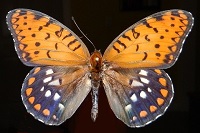
- Posts: 11
- Joined: Wed May 25, 2022 7:32 pm
Re: Agrias butterflies
by mothman27 » Mon Apr 08, 2024 3:32 pm
It certainly would be awesome to collect some myself but I'm honestly not sure all that would entail. A few questions someone here may be able to answer:Chuck wrote: ↑Sat Apr 06, 2024 9:45 pm Congratulations on finishing school! It's quite a bit of work and time.
My suggestion if I may- don't buy commercially, use that money to go there. You're young enough to learn to handle the hardships and maximize collecting efforts. Why buy one when you can catch ten?
1. I'm sure there are certain South American countries more friendly to collecting (not Brazil, lol), what are the best options?
2. How does one go about finding a collecting spot in a foreign country and a local connection?
3. What kind of import/export permits/paperwork would a collecting trip require. Do you ship your specimens back or carry them with you?
4. Is it better to travel with collecting equipment, or ship it there, or buy/make it there? I'm thinking of bait traps, lights and nets.
5. How safe would it be to embark on such a trip as a single individual?
6. For something like Agrias, how likely is it that you would even collect any while there?
The idea of collecting in Aouth America sounds great but obviously, I have endless logistical questions.
-
jhyatt

- Posts: 111
- Joined: Mon May 23, 2022 2:08 pm
Re: Preserving large Lepidoptera pupae
by jhyatt » Mon Apr 08, 2024 2:17 pm
jh
-
Trehopr1

- Global Moderators

- Posts: 996
- Joined: Thu Mar 31, 2022 1:48 am
Re: Preserving large Lepidoptera pupae
by Trehopr1 » Mon Apr 08, 2024 6:16 am
Very sorry to hear that your experiment was disastrous. I was afraid that using any man-made solvents would severely dry out or damage the test subject.
This is why I suggested using 90% rubbing alcohol. At the museum where I worked for 8 years we stored many things in 70% alcohol but, we also stored other things in 90% to fix the tissues without necessarily drying them out.
I've never known 70% or 90% rubbing alcohol to damage anything. Yes, initially when you drop something in it there is an exchange of bodily fluids and rubbing alcohol and this is where you will see the rubbing alcohol change color. However, once you dump out the bad alcohol which has become discolored you refill it and check it again in a little while to see that it still remains clear.
Wishing you better luck next time if you have another test subject.
-
lamprima2

- Premium Member - 2024

- Posts: 92
- Joined: Mon May 23, 2022 8:16 pm
Re: Preserving large Lepidoptera pupae
by lamprima2 » Mon Apr 08, 2024 5:26 am
Manduca sexta pupae were euthanized by freezing,
and stored in 80% ethanol for two months. The result was disastrous: upon drying, the pupae became covered with whitish flakes. It looks like the outer layer of the pupa's cuticle (epicuticle?) is peeled off. Next time I will simply pin the pupa and let it dry in the presence of CaCl2 or bury it in silica-gel, rather than exposing it to organic solvents.
